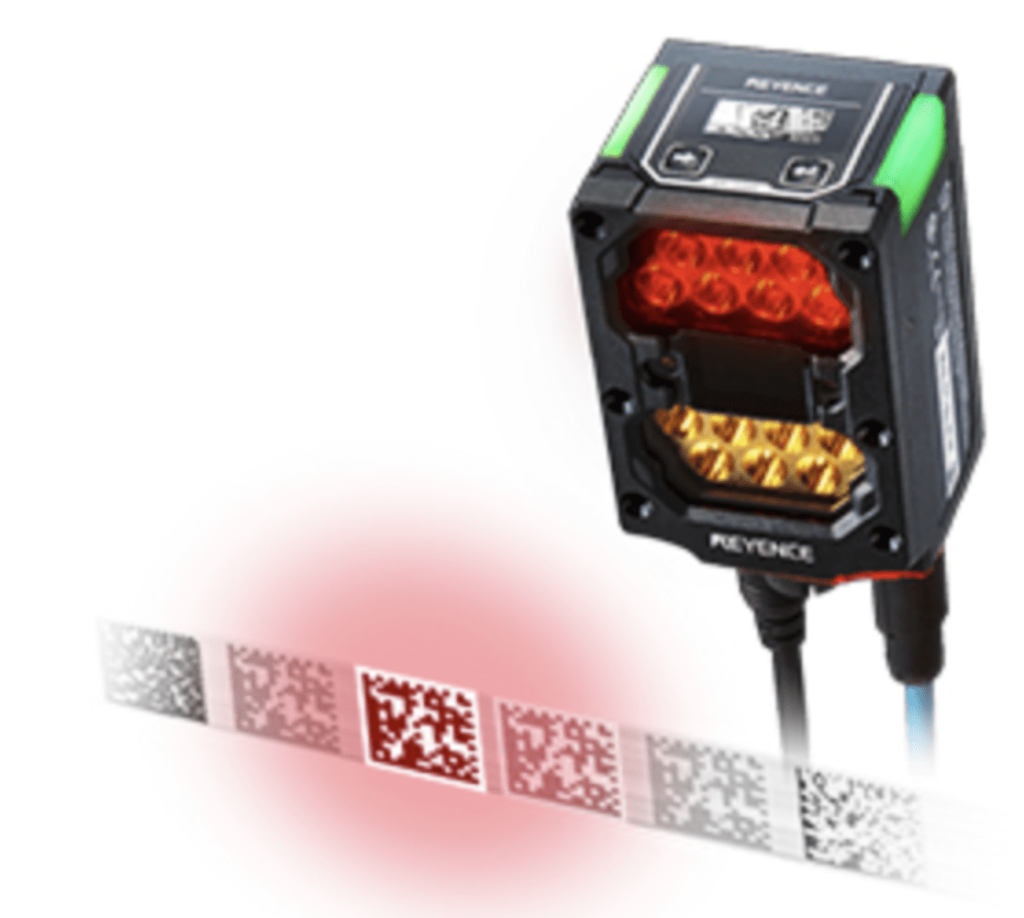EAN
Dünyada 100’e yakın barkod mevcuttur. Aşağıda EAN barkodlarının temelleri hakkında kısa bir bilgi yer almaktadır.
EAN Kodu ve POS Sistemi
EAN Kodu
EAN kodu, günümüzde mağazalarda en çok ticarileştirilen ürünlerin üzerine işaretlenmiş ve standartlaştırılmış bir barkoddur.
EAN, marketler aracılığıyla yaygınlaşan POS sisteminde kullanılmaktadır.
EAN, dünya çapında evrensel bir kod olduğundan ABD ve Kanada’nın UPC’si ve Japonya’nın JAN’ı ile uyumludur.
EAN=European Article Number (Avrupa ürün numarası)
UPC=Universal Product Code (Evrensel ürün kodu)
JAN=Japan Article Number (Japonya ürün numarası)

Bu, Japon (A) OO Şirketinin (B) yumuşatıcı şampuanıdır (C). Bu kod dünyanın her yerinde aynıdır
POS Sistemi
POS sistemi, süpermarketlerde ve marketlerde alınacak ürünlerin EAN kodunu okutarak ticari ürünlerin satışını, stoğunu ve satın alınmasını yönetmek için kullanılan bir sistemdir. Ayrıca, sistem tüketici eğilimlerinin kesin verilerini ortaya koyduğundan, yönetim stratejilerini belirlemede de katkı sağlar.

(1) Satış yönetimi (2) Stoklama ve satın alma yönetimi (3) Tüketici eğilimlerini anlama
(1) Satış yönetimi
Barkod kullanımı kasada çalışmayı herkes için kolaylaştırır. Müşterileri uzun süre bekletmemek adına, sistem kasa işlemlerinde zorlanan çalışanları destekler. Örneğin, günlük satış tutarının sayımı anında yapılabilir.
(2) Stoklama ve satın alma yönetimi
Sistem gerçek zamanlı olarak, “Ürünü kim satın alıyor?”, “Ürün ne zaman satın alındı?” ve “Hangi ürün satın alındı?” gibi soruların cevabını verebildiği için talep edilen ürünün istenilen zamanda satın alınmasını mümkün kılar. Marketler (bakkallar) gibi sınırlı alana sahip olan mağazaların yeterli miktarda stok saklamaları zor olduğundan, satılması olası ürünleri satılabilir miktarlarda almaları onlar için çok önemlidir. Paketlenmiş hazır yemekler gibi son kullanma tarihi olan gıdaları uzun süre stoklamalarına izin verilmez. Dolayısıyla POS sistemi, talep edilen zamanda, gerekli miktarda satın alma düzenlemesinin yapılmasına izin verir.
(3) Tüketici eğilimlerini anlama
En çok satılan ürün nedir?
Hedef kitlesini kimler oluşturur?
En az satılan ürün hangisidir?
Ne tür bir kampanya başarılı bir satışa olanak verir?
Yukarıdaki soruların cevapları gibi yönetim stratejilerini belirleyebilmek için herhangi bir bilgi gerçek zamanlı olarak toplanabilir.
EAN Veri Yapısı
Veri Yapısı
EAN aşağıdaki gibi bir veri bileşimine sahiptir.

(1) Ülke kodu
Ülke ismini temsil eder.
(2) Üretici kodu
Asıl satıcının adını temsil eder. Üretici kodunu edinebilmek için her ülke kendi kod merkezinde kayıt için uygular. EAN kodu yalnızca üretici kodu edinildikten sonra kullanılabilir.
(3) Ürün parça kodu
Ürünü tanımlar. Ürün parça kodunu edinen üretici kendi ayarlamalarını yapabilir. Aynı üreticinin farklı ürünü farklı ürün parça koduna sahiptir.


Ülke kodu listesi
Üye ülkelerin sayısı 94’tür (92 kod merkezi) (Not 1)
| Ülke Kodu | Ülke İsmi |
|---|---|
| 0~9 | Amerika/Kanada (Not 2 |
| 20~29 | Perakendeciler için mağaza içi işaretleme (Not 3) |
| 30~37 | Fransa |
| 380 | Bulgaristan |
| 383 | Slovenya |
| 385 | Hırvatistan |
| 387 | Bosna – Hersek |
| 400~440 | Almanya |
| 45 + 49 | Japonya |
| 460~469 | Rusya ve diğerleri |
| 471 | Tayvan |
| 474 | Estonya |
| 475 | Letonya |
| 476 | Azerbaidjan (Note 4) |
| 477 | Litvanya |
| 478 | Özbekistan |
| 479 | Sri Lanka |
| 480 | Filipinler |
| 481 | Belarus |
| 482 | Ukrayna |
| 484 | Moldova |
| 485 | Ermenistan |
| 486 | Gürcistan |
| 487 | Kazakistan |
| 489 | Hong Kong |
| 50 | İngiltere |
| 520 | Yunanistan |
| 528 | Lübnan |
| 529 | Kıbrıs |
| 531 | Makedonya |
| 535 | Malta |
| 539 | Irlanda |
| 54 | Belçika, Lüksemburg |
| 560 | Portekiz |
| 569 | İzlanda |
| 57 | Danimarka |
| 590 | Polonya |
| 594 | Romanya |
| 599 | Macaristan |
| 600~601 | Güney Afrika Cumhuriyeti |
| 609 | Morityus |
| 611 | Fas |
| 613 | Cezayir |
| 619 | Tunus |
| 621 | Suriye |
| 622 | Mısır |
| 625 | Ürdün |
| 626 | Iran |
| 628 | Suudi Arabistan (Note 4) |
| 64 | Finlandiya |
| 690~693 | |
| 70 | |
| 729 | |
| 73 | |
| 740 | |
| 741 | |
| 742 | |
| 743 | |
| 744 | |
| 745 | |
| 746 | |
| 750 | |
| 759 | |
| 76 | |
| 770 | |
| 773 | |
| 775 | |
| 777 | |
| 779 | |
| 780 | |
| 784 | |
| 786 | |
| 789 | |
| 80~83 | |
| 84 | |
| 850 | |
| 858 | |
| 859 | |
| 860 | |
| 867 | |
| 868 | Türkiye |
| 869 | Türkiye |
| 87 | |
| 880 | |
| 885 | |
| 888 | |
| 890 | |
| 893 | |
| 899 | |
| 90~91 | |
| 93 | |
| 94 | |
| 955 | |
| 977 | |
| 978~979 | |
| 980 | |
| 981~982 | |
| 99 | |
| N/A (Note 5) |
(Not 1) EAN üyesi ülkelere ABD ve Kanada dahil değildir. ABD ve Kanada için ülke kodları 2005’te 00’dan 13’e değiştirilmiştir.
(Not 2) ABD’nİn ve Kanada’nın birleşik ürün kodu UPC, 1973’te belirlenmiştir. Diğer 94 ülke (92 organizasyon) Uluslararası EAN Topluluğunun üye ülkeleridir. ABD ve Kanada’nın ülke kodları 200’te 00’dan 13’e değiştirilmiştir.
(Not 3) Her ülkenin kendi kod merkezi kendi kullanım şekillerini belirler. Ana olarak perakendecilerin mağaza içi işaretlemelerinde kullanılır.
(Not 4) 1999’da yeni üye ülke.
(Not 5) 1999’da yeni üye ülke. (Belirlenen ülke kodu)
EAN üretici kodu 7 haneli olarak değiştirilmiştir.
Üretici kodu, artan üretici kodu başvurularının karşılanabilmesi için Ocak 2001’den itibaren yeni kayıt için geçerli olan 7 haneli (ülke kodu dahil 9 haneli) olarak değiştirilmiştir.

Halihazırda 5 haneli üretici kodu almış olan şirketler, 5 haneli geleneksel üretici kodları oldukları gibi kullanılabilir. Diğer bir deyişle, kodlama sisteminde herhangi bir değişiklik talep edilmez.
Toplam hane sayısı değişmeden kalır. (13 digits)
5 ve 7 haneli üretici kodları Ocak 2001’den beri aynı şekilde kullanılır. Ancak, aşağıdaki numaralar atanacağından aynı numaraya sahip EAN kodu hiçbir zaman görünmeyecektir. (Aşağıdaki tablo yalnızca Japonya’da geçerlidir.)
| 5 haneli üretici kodu | 4900000~4999999 4500000~4599999 |
| 7 haneli üretici kodu | 456000000~459999999 |
Kaynak İşaretleme ve Mağaza İçi İşaretleme
Kaynak işaretleme
Kaynak işaretleme, üretim ve paketleme süreçlerinde üreticilerin ve satıcıların EAN kodlarını ürün ambalajlarının veya kutularının üstüne bastırmaları anlamına gelir. Marketlerdeki çoğu yiyecek ve günlük ihtiyaç, kaynak işaretli EAN kodlarına sahiptir. Daha önce de bahsettiğimiz gibi, ürüne kaynak işaretlemesi eklemek için ürün parça kodu kaydı gereklidir

Mağaza içi işaretleme (markalama)
Taze gıdalar (sebzeler, etler vb.) her bir süpermarketin özel olarak düzenlendiği etiketleri taşır. Çünkü fiyat her bir ürünün kendi ağırlığına bağlıdır. Dolayısıyla, bu uygulama tek tek bireysel mağazalarda geçerli olduğundan mağaza içi işaretleme (markalama) olarak adlandırılır. Mağaza içi işaretlemeye bağlı olan ürünler (örneğin; sebzeler) yalnızca söz konusu markette satılır ve ürün kodu talep edilmez. Bu nedenle, herhangi bir veri bileşimi mağazanın kullanımına yöneliktir. Ayrıca, fiyat barkoda da eklenebilir. Ancak, EAN ülke kodunu karşılayan ilk iki basamak için, herhangi bir karışıklığa yol açmamak adına 20’den 29’a kadar kullanılmasına karar verilmiştir.

Diğer Sektörlerdeki Uygulamalar
Kitaplar ve dergiler için kullanılan kaynak işaretli barkodlar, EAN barkod sistemine sahip olsa da tek tek sektörlerin taleplerini karşılayabilmek adına kendi veri bileşimlerine de sahiptir. Fiyatlar dahil bilgiler barkodda yer almaktadır.
EAN kitap kodu
Kitapları sınıflandırabilmek adına her birinde ISBN (International Standard Book Number – Uluslararası Standart Kitap Numarası) bulunur.

A: Ülke kod B: Yayıncı/yayınevi kodu C: Kitap kodu D: Kontrol basamağı
Barkod sınıflandırma kodu ile oluşturulurken (satılık konuya göre sınıflandırılmış, yayın kaynağı, içerik) fiyat kodu ISBN ile birleştirilir (vergisiz).

Fiyat kodu
EAN Bileşimi/Kompozisyonu (Detaylar)
EAN kodları aşağıdaki bileşenleri içerir:


Barkodun ortasında merkez çubuğu, sağında ve solunda ise koruma (güvenlik) çubukları olduğunda EAN, başlatma/durdurma karakterleri kullanmaz.
Diğer sayılar sırayla düzenlenir.
Yukarıdaki barkod düzenlemesinde görülebileceği gibi, kontrol basamağı dahil standart tip yalnızca 12 haneye sahiptir. Ancak, normalde 13 basamak verisini temsil eder. Bu bölüm için buraya bakınız.
EAN Karakter Bileşimi
EAN aşağıdaki karakterlerden oluşur. Merkez çubuğunun sağ ve sol taraflarında sayıları temsil edebilmek için farklı çubuk şablonları kullanılır. Orta çubuğun sol tarafındaki çubuk modelleri “tek eşlik” ve “çift eşlik” içerir.
| Karakter | Sol tek eşitliği | Sol çift eşitliği | Sağ çift eşitliği |
|---|---|---|---|
| Çubuk modeli | Çubuk modeli | Çubuk modeli | |
| 0 |  |
 |
 |
| 1 |  |
 |
 |
| 2 |  |
 |
 |
| 3 |  |
 |
 |
| 4 |  |
 |
 |
| 5 |  |
 |
 |
| 6 |  |
 |
 |
| 7 |  |
 |
 |
| 8 |  |
 |
 |
| 9 |  |
 |
 |
| Sol koruma çubuğu |  |
||
| Orta çubuk, merkez çubuk |  |
||
| Sağ koruma çubuğu |  |
Standart tipin en soldaki karakteri (ilk basamak) için, orta çubuğun sol tarafındaki 6 karakterin tek ve çift eşitliklerin herhangi bir kombinasyonu ile belirlenir.
Kombinasyonlar aşağıdaki gibidir:
O…Tek eşitlik, E…Çift eşitli
| İlk Karakter | T ve Ç Kombinasyonları |
|---|---|
| 0 | OOOOOO |
| 1 | OOEOEE |
| 2 | OOEEOE |
| 3 | OOEEEO |
| 4 | OEOOEE |
| 5 | OEEOOE |
| 6 | OEEEOO |
| 7 | OEOEOE |
| 8 | OEOEEO |
| 9 | OEEOEO |
Kısa tipte (8 basamak), orta çubuğun sol tarafındaki tüm karakterler (4 basamak) tek paritelerle temsil edilir.
Standart Boyut ve Büyütme
EAN, barkod boyutunun özelliklerini aşağıdaki gibi tanımlar:
• Standart barkodun dar çubuk genişliği 0,33 mm’dir.
Standart barkod, 0,8’den 2,0’a kadar büyütme oranı aralığında büyütülebilir veya küçültülebilir. (Dar çubuk genişliği aralığı 0,26 ile 0,66 mm arasında kabul edilir.)
Aşağıdaki tablo, her tipten büyütme için barkod boyutlarını gösterir. (Standart tip [13 haneli] barkod için)
| Büyütme | 0.8 | 1.0 | 1.2 | 2.0 |
|---|---|---|---|---|
| Dar çubuk genişliği | 0.264mm | 0.33mm | 0.396mm | 0.66mm |
| Barkod uzunluğu | 29.83mm | 37.29mm | 44.75mm | 74.58mm |
| Barkod yüksekliği | 18.29mm | 22.86mm | 27.43mm | 45.72mm |

EAN Çubuğu (Bar) Bileşiminin Özellikleri
EAN barkod bileşimi aşağıdaki özelliklere sahiptir:
• EAN kodu 4 farklı çubuk genişliği kullanır ve iyi bir baskı kalitesi gerektirir. FA ve nokta vuruşlu yazıcılar için mürekkep püskürtmeli yazıcılar gibi baskı kalitesi düşük yazıcılar kullanılırsa, barkod okuyucu dengesiz okumalar yapar.
• Basamak sayısı sabittir ve kullanıcıların kendi tercihlerine göre kendi veri bileşimlerini oluşturmalarına olanak vermez.
UPC
UPC nedir?
UPC, ABD ve Kanada’da kullanılan birleşik bir ürün kodudur. Avrupa’nın EAN ve Japonya’nın JAN kodu UPC temellidir. UPC, esas olarak UPC-A ve UPC-E kullanır. UPC-A’nın 12 hanesi varken UPC-E’nin 8 hanesi vardır.



ABD ve Kanada’ya ihraç edilen ürünler için pek çok üretici kodu vardır. Bu nedenle, UPC üretici kodunu ve kaynak işaretlemesini edinmek gerekir.
UPC-A'nın Sayı Sistemi Karakteri ve Veri Bileşimi
UPC-A yalnızca ABD’de ve Kanada’da kullanılır ve ülke kodu yoktur. Onun yerine, bilgilerin içeriğini sayı sistemi karakteri olarak adlandırılan ilk basamak tanımlar.
Aşağıda, Sayı Sistemi (SS) değerlerine göre tipik veri bileşiminin bir özeti yer almaktadır:
| SS | Uygulamalar | Veri Kompozisyonu/Bileşimi |
|---|---|---|
| 0,6,7 | Kaynak işaretlemesi için
(EAN ile aynı sistem) |
(19 Mart 2000’e kadar)
|
| 1,8,9 | Kaynak işaretlemesi için
(EAN ile aynı sistem) |
(20 Mart 2000’den itibaren)
|
| 2 | Kaynak işaretlemesi için
(Tartım ürünleri) |
 A: SS / B: Üretici kodu / C: Fiyat C/D / D: Fiyat / E: C/D A: SS / B: Üretici kodu / C: Fiyat C/D / D: Fiyat / E: C/D |
| 5 | Kuponlar için |  A: SS / B: Üretici kodu / C: Aile kodu / D: Kupon fiyatı / E: C/D A: SS / B: Üretici kodu / C: Aile kodu / D: Kupon fiyatı / E: C/D |
* C/D = Kontrol Basamağı

20 Mart 2000’den sonra uygulanan üretici kodları, EAN için olduğu gibi 7 haneli olarak değiştirilmiştir.

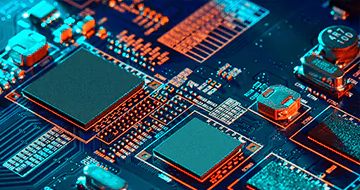
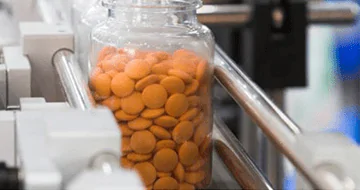

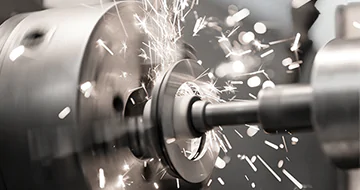
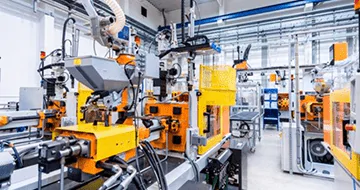
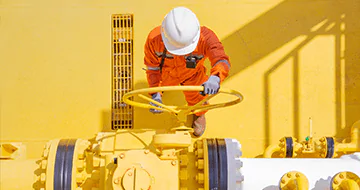
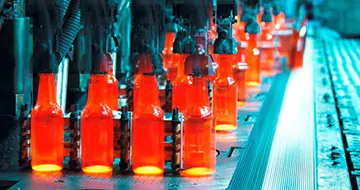
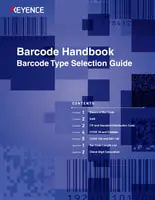

 A: SS / B: Üretici kodu / C: Ürün parça kodu / D: C/D
A: SS / B: Üretici kodu / C: Ürün parça kodu / D: C/D A: SS / B: Üretici kodu / C: Ürün parça kodu / D: C/D
A: SS / B: Üretici kodu / C: Ürün parça kodu / D: C/D